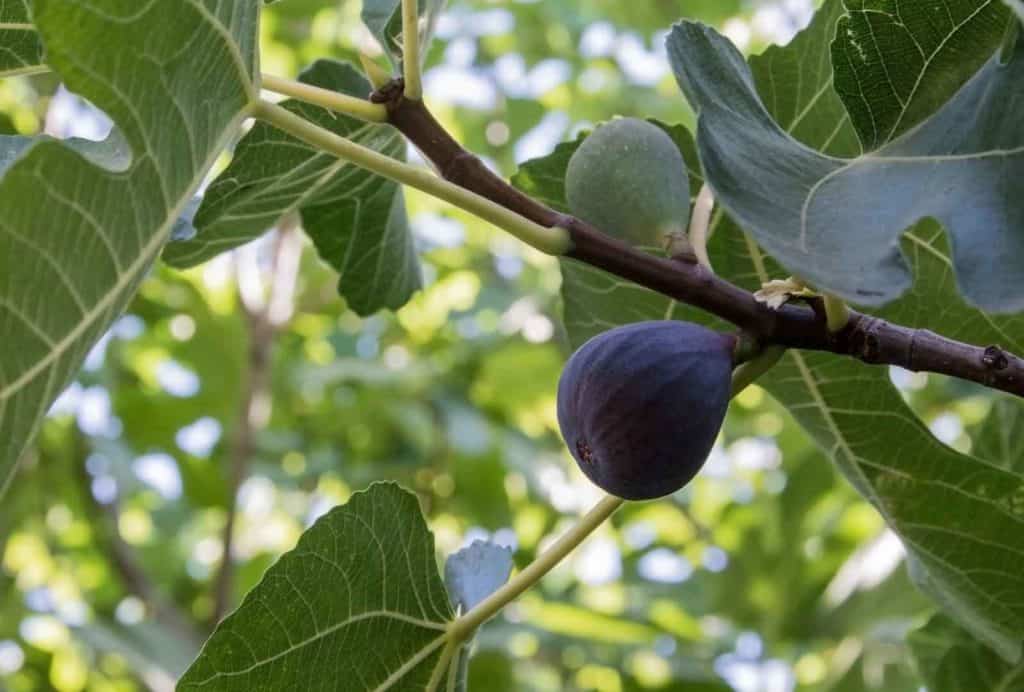There’s a lot to like about figs. The fruit of this plant is both crunchy and juicy. Rich in vitamins and essential minerals, the tasty snacks coming from fig trees are something special. These can be consumed in the form of compotes, jams, dried, or fresh off the tree.
Growing this plant is easy. That’s precisely why figs have such a long and rich history of cultivation. Although a fig tree can survive without pruning, doing this will maximize the overall yield and the size of its fruits.
Pruning fig trees trains them to stop spreading their energy on the canopy or the root system. Instead, it forces them to focus on fruit production. In this article, we’ll take a closer look at this process and help you learn how to properly prune your fig tree or bush.
Contents
Overview of Fig Trees
A relative of the mulberry tree, the fig tree is a member of the Moraceae family. It originates from southeastern Europe and western Asia and is one of the first plants that the humans cultivated.
Most fig trees grow up to 20 feet wide and up to 20 feet tall. Besides bearing the juicy fruits, they are attractive enough to be used for patio landscaping. If you want to achieve a tropical look anywhere on your property, consider using fig trees.
One of the most interesting things about this plant is the mythology that surrounds it.
For example, the Romans believed that this plant is sacred and that the god Saturn wears a crown made of fig leaves. In South America, there’s a superstition that this plant can draw elves to your home. Also, the fig tree is often cited in the Bible.
When is the Best Time to Prune a Fig Tree?
Some shrubs and trees leak sap when they’re cut. These include fig trees. This kind of “bleeding” increases the likelihood of an infection. The disease can find its way into the tree through the wounds made by pruning. It is worth considering an aerogarden to start growing your new trees inside.
For that matter, pruning fig trees should not be done at times when “bleeding” is likely.
The best time to engage in this process is when a fig tree is dormant. With these plants being deciduous, it’s quite easy to tell when they’re dormant – when they drop the leaves.
Tools Required for Pruning a Fig Tree
Like with all other plants, pruning a fig tree requires the use of several tools. Each of them is adequate for different situations, depending on the type of pruning, the time of the year, the age of the plant, etc.
- Handsaw
- Pruning shears
- Chainsaw
- Scaffolding or ladder
- Safety equipment such as gloves and helmet
Don’t forget that disinfecting the tools before using them is essential. This prevents the risk of transmitting diseases. It’s something you’ll have to do before each pruning. Moreover, basic care will extend the lifespan of your tools:
- Use the right tools to avoid straining and twisting
- Keep the wooden handles adequately varnished
- Use an oilstone to keep the cutting edges sharp
- Regularly clean and oil your tools
By employing these practices on a regular basis, your tools will always be sharp and ready for pruning.
First Pruning
When it comes to pruning fig trees, it’s important to do it soon after they’re planted.
Most gardening enthusiasts advise that pruning a fig tree should be done right after it’s put in the ground. On the other hand, some experts think that it’s best to wait for the first dormant season.
The timing should depend on your tree’s health. If it grows vigorously right after planting, pruning should be done immediately. This is will prevent it from spreading out its energy.
If your tree has weak branches, on the other hand, it will need some time for acclimation. In such cases, waiting until the end of the winter is the best decision. Prune the tree just before the buds sprout.
The very first pruning can be quite drastic. In general, the plant should be cut back by half. Doing this forces the tree to develop stronger roots.
The branches that grew at approximately 45° to the main trunk should be retained. However, make sure to reduce their length by half.
Retaining branches that grow at larger angles is also advisable. But, once again, their length should be reduced by half. This is particularly important if you want a bushier fig tree.
When shortening branches, it’s important to make cuts just before the buds that are likely to produce new branches. Cut at a 45° angle. As we already said, wipe your tools with alcohol if you don’t want your plant to be infected by dangerous pathogens.
Second Pruning
Once the fig tree goes through a complete growing season, there will be a number of new branches on it. If your wish is to maximize the fruit yield, you’ll have to do some pruning again.
This time, you’ll have to reduce the new branches to only five or six of them. They will need to be evenly spaced around the tree’s trunk. Do this during the plant’s second winter, right before the sap begins to run.
Select the strongest branches and reduce their lengths to one third. All other branches at the trunk will have to be removed.
You’ll also have to remove the smaller branches sprouting from the strongest ones. This is particularly important if they’re sprouting at angles that will put them close to the tree’s trunk. They will draw too much energy from the tree and won’t produce the best fruit.
Once you’ve reduced the length of the fruiting branches, cut off any remaining deadwood. You’ll also have to remove the suckers located at your tree’s base.
While they resemble branches, suckers are actually trees in their own right. What’s more, sometimes they’re of an entirely different species of trees. They can drain the energy of your fig tree and they have to be removed.
Cut off the suckers as close to the trunk as you can. Make sure to leave the collar, however. This little nib, emerging from the trunk, can assist your tree with quicker healing.
Third Pruning
During your tree’s third winter, you’ll have to prune the new branches growing from its trunk. The fruiting branches should be left in place. However, if there’s any new growth on them, make sure to cut it off too.
This is particularly important if the angle at which they’re growing puts them too close to the trunk. As we already said, these branches will only make problems in the future. Once again, remove the new suckers and all dead wood.
In the following years, pruning fig trees is not required. A radical pruning, as described above, is needed only in the first few years. You’ll only have to do some light thinning, like the occasional removal of new suckers or dead wood.
How to Prune an Indoor Fig Bush?
Several species of fig trees can be used as indoor plants. These include the weeping fig (Ficus Benjamina) and the fiddle leaf fig (Ficus Lyrata).
Since some of them bear fruit, the best time to prune them is just after their fruit ripens in June. If your specimen doesn’t produce fruit, the pruning will have to wait until spring.
Why do potted indoor figs need to be pruned? Doing this will make them grow into a regular bulb shape.
Start by removing the suckers and the deadwood. Once you’re done, remove the branches growing in an irregular shape with sharp, clean pruning shears. Make clean cuts that will heal quickly while trying to remove the branches as close to the trunk as you can.
During the very first pruning, it’s important to cut back the primary branches by half. This is bound to stimulate their growth.
The following prunings should not be as radical. You’ll need to prune your indoor fig bush only to remove the deadwood and maintain its shape.
How to Espalier a Fig Tree?
Espalier is a technique of growing various plants against walls and other vertical surfaces. Fig trees are especially good for it due to their flexible branches.
Purchase a trellis and install it against the wall. Plant your fig tree in the middle of it, and give it time to grow.
As the new branches are emerging, you’ll be able to bend them to your preferred shape. Use plastic tie tape to tie the branches to the bars of the trellis.
When the leaves fall off in autumn, remove all crowded and weak branches. Unless you’re aiming for a solid form, ensure that there’s some space between the branches you want to keep.
Continue cutting overgrown portions during each of the following dormant seasons. Cut back the tree’s sides and the top to your desired size and shape.
Conclusion
With this knowledge in mind, you’ll be able to properly prune your fig trees and maximize their overall yield. Don’t forget to wipe your tools with alcohol before pruning. Figs are sensitive plants and can easily get infected through the wounds inflicted by pruning.







